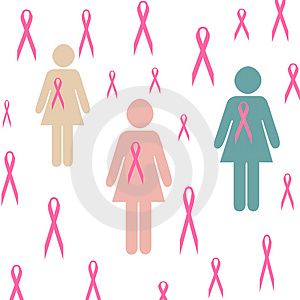Breast Cancer Clues
Catching it early is the first step. Thanks to better treatments and antismoking campaigns, the incidence and mortality rates of cancer have been dropping steadily over the past 20 years.
More than 200,000 women will be diagnosed with breast cancer this year, but there is an arsenal of new treatments that hike survival rates and lengthen the lives of even women with advanced disease.

The majority of breast cancer patients have hormone-sensitive tumors, meaning that estrogen and/or progesterone fuel their growth. Around 25 percent have a deadlier type caused by too much of the protein HER2, which makes tumors especially fast-growing and aggressive. Younger women are likelier to have a particularly difficult-to-treat cancer called a triple negative. It’s neither estrogen-sensitive nor progesterone-sensitive; nor HER2-positive. The tumor tends to grow faster and is less likely to be seen on a mammorgram. It’s also more likely to spread to other parts of the body early. But there have been new developments to help women stricken with each of these types of breast cancer.
Warning Signs Early breast cancer usually doesn’t cause symptoms. But as the tumor gets larger, common changes include a lump or thickening in or near the breast or in the underarm area; dimpling or puckering in the skin of the breast; a fluid discharge from the nipple; or scaly, red, or swollen skin on the breast, nipple or areola (the dark skin at the center of the breast surrounding the nipples). By the time you feel a lump, it’s already pretty far along.
What it can be mistaken for skin rashes or fibrous cysts.
The tests you’ll need Women should get mammograms every year starting at age 40 – digital mammograms are best, especially if you have dense breasts – and have their doctors perform a physical exam to check for lumps. If something suspicious id detected, your doctor will order other imaging tests, such as an ultrasound, which can tell whether a lump is solid or is simply a fluid-filled cyst. Women who are at a higher risk of breast cancer because of family history or the presence of mutant BRCA1 or BRCA2 genes may be referred for an MRI, which provides more detailed pictures of breast tissue. If these tests don’t rule out breast cancer, women may need a biopsy – the removal of tissue to look for cancer cells – to tell for sure if cancer is present.
Treatments These vary, depending on the type of breast cancer and how far advanced it is. Early-stage tumors are usually removed by a lumpectomy, a surgical procedure that cuts out the lump but leaves the breast intact. Doctors may also perform a sentinel node biopsy at the same time to determine if the cancer has spread to the lymph nodes. Later-stage cancers may require a mastectomy – a procedure in which the entire breast is removed, along with infected lymph nodes, to prevent the cancer from migrating to other parts of the body.
After surgery, women may receive radiation therapy, hormone treatments, chemotherapy, targeted therapy, or a combination, depending on how far advanced the cancer is and the type of tumor.
For women with hormone-sensitive tumors, doctors often prescribe estrogen-blocking medications to squelch the hormones that can drive tumor growth.

